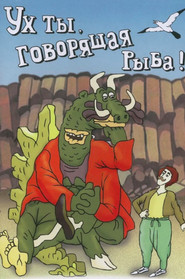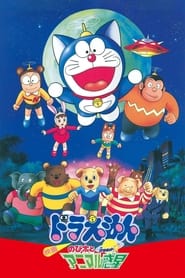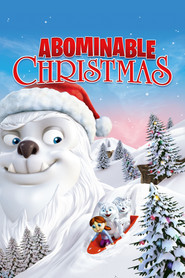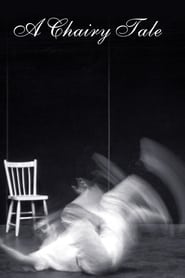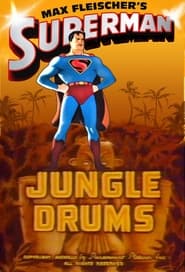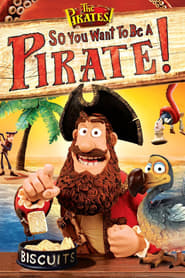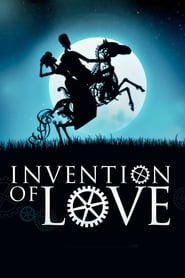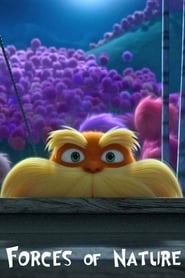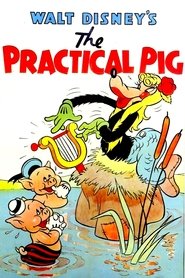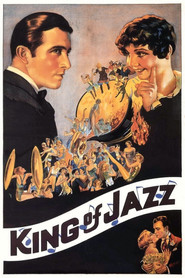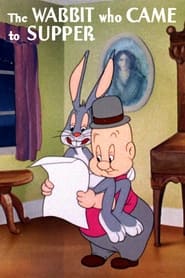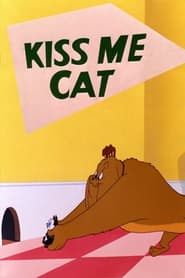Top Rated Animation Movies on Tub Tv - Page 161
-
An Optical Poem
1938
An Optical Poem
1938
star 6.6A dance of shapes. A title card tells us this is an experiment in conveying the mental images of music in a visual form. Liszt's "Second Hungarian Rhapsody" is the music. The shapes, all two-dimensional, are circles primarily, with some squares and rectangles, and a few triangles. The shapes move rhythmically to the music: receding from view or moving across the screen. Red circles on a blue background; light blue squares; white rectangles. Then, a red background of many circles with a few in the foreground. Red gives way to blue then to white. Shapes reappear as Liszt's themes re-occur. Then, with a few staccato notes and images, it's over. -
Mickey's Follies
1929
Mickey's Follies
1929
star 5Mickey puts on a show in his barnyard. A short dramatic scene by a chicken and rooster; an operatic ode by Patricia Pig, and then the main attraction: Mickey sings and plays his theme song, then dances to it. -
Wow! A Talking Fish!
1983
Wow! A Talking Fish!
1983
star 8Created in 1983, the animated movie uses the plot of Ovanes Tumanyan's tale "Talking fish". -
Doraemon: Nobita and the Animal Planet
1990
star 7A mysterious pink fog takes Nobita, Doraemon, Shizuka, Suneo, and Gian to a planet populated by animals. Legend says that the ancestors of this population used to live on the moon, but were transported out of there to escape from the voracious creatures that lived there too. -
The Plowboy
1929
The Plowboy
1929
star 5.2Mickey flirts with Minnie on the farm, but she spurns him - making him look bad in the eyes of his helper, Horace Horsecollar. -
Abominable Christmas
2012
Abominable Christmas
2012
star 7.3Despite repeated warnings about humans from their father, the Abominable Snowman, two Abominable Snowkids find themselves in a sleepy Colorado mountain town after being chased out of their hideaway by a scientist determined to capture them. -
A Chairy Tale
1957
-
Jungle Drums
1943
-
Electric Earthquake
1942
Electric Earthquake
1942
star 6.7A scientist uses an earthquake machine to threaten the city, and only Superman can stop his extortion plan! -
So You Want To Be A Pirate!
2012
star 6.3With the help of his trusted dodo Polly, the Pirate Captain presents fun-loving and hilarious tips and advice on pirating. Learn how to remember where you buried your treasure, the secrets of navigating winds, get an inside look at pirate recruiting and even a Pirate’s recipe for a giant squid with lemon. Featuring special guests like Charles Darwin and the Pirate King you will set sail for giggles and fun with musical surprises along the way! -
Invention of Love
2010
Invention of Love
2010
star 6.4An inventor tries to impress the woman he loves. Will she love him back? -
Forces of Nature
2012
Forces of Nature
2012
star 5.3Determined to scare The Once-ler out of Truffula Valley, The Lorax decides to create the illusion of ominous forces of nature. -
The Practical Pig
1939
The Practical Pig
1939
star 6.6After his two brothers are captured, the third little pig invents a machine to capture the big bad wolf. -
King of Jazz
1930
King of Jazz
1930
star 6.2Made during the early years of the movie musical, this exuberant revue was one of the most extravagant, eclectic, and technically ambitious Hollywood productions of its day. Starring the bandleader Paul Whiteman, then widely celebrated as the King of Jazz, the film drew from Broadway variety shows to present a spectacular array of sketches, performances by such acts as the Rhythm Boys (featuring a young Bing Crosby), and orchestral numbers—all lavishly staged by veteran theater director John Murray Anderson. -
Baton Bunny
1959
Baton Bunny
1959
star 6.7Bugs conducts the Warner Brothers Symphony in Franz von Suppé's "Morning, Noon, and Night in Vienna" while reacting to a bothersome fly. -
The Wabbit Who Came to Supper
1942
star 7Bugs Bunny exploits the situation when an uncle leaves Elmer Fudd three million dollars on the condition that he harm no animals, especially rabbits. -
Black Panther
2010
Black Panther
2010
star 6.1Black Panther is the ruler and protector of the African nation of Wakanda. Using technology, wits, and extraordinary fighting ability he must protect his nation from an invasion led by Ulysses Klaw, the man who killed his father. -
Out-Foxed
1949
Out-Foxed
1949
star 6.7Droopy is part of a pack of English hunting hounds trying unsuccessfully to catch a tricky, tea-drinking fox. -
Kikoriki: Team Invincible
2011
star 6.4But the lives of the Kikoriki are suddenly turned upside-down when they stumble on a strange device they had only heard about - a TV. -
Kiss Me Cat
1953
Kiss Me Cat
1953
star 6.6Marc Antony must convince his owner that Pussyfoot is a great mouser to keep him in the house.
 Netflix
Netflix
 Amazon Prime Video
Amazon Prime Video
 Apple iTunes
Apple iTunes
 Apple TV Plus
Apple TV Plus
 Disney Plus
Disney Plus
 Google Play Movies
Google Play Movies
 Paramount Plus
Paramount Plus
 Hulu
Hulu
 HBO Max
HBO Max
 YouTube
YouTube
 fuboTV
fuboTV
 Peacock
Peacock
 Peacock Premium
Peacock Premium
 Amazon Video
Amazon Video
 The Roku Channel
The Roku Channel
 AMC+
AMC+
 Kocowa
Kocowa
 Hoopla
Hoopla
 The CW
The CW
 Vudu
Vudu
 Starz
Starz
 Showtime
Showtime
 PBS
PBS
 Pantaflix
Pantaflix
 FXNow
FXNow
 Tubi TV
Tubi TV
 Kanopy
Kanopy
 Comedy Central
Comedy Central
 Crunchyroll
Crunchyroll
 Microsoft Store
Microsoft Store
 Redbox
Redbox
 Sun Nxt
Sun Nxt
 ABC
ABC
 DIRECTV
DIRECTV
 Crackle
Crackle
 Fandor
Fandor
 Plex
Plex


